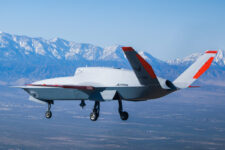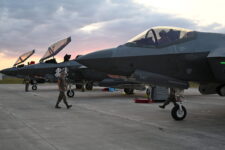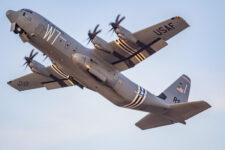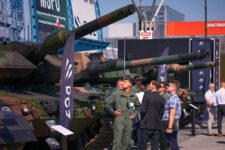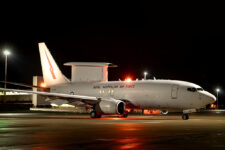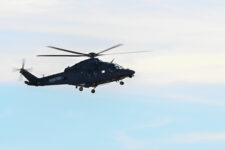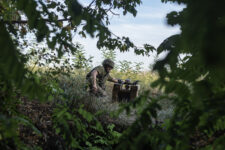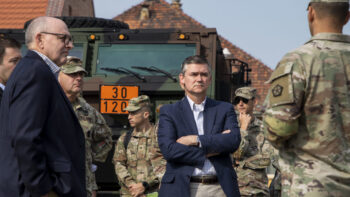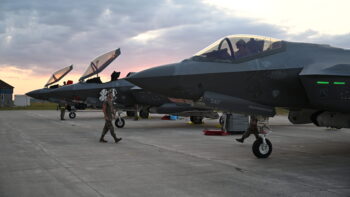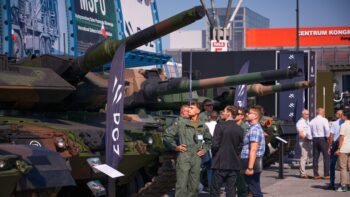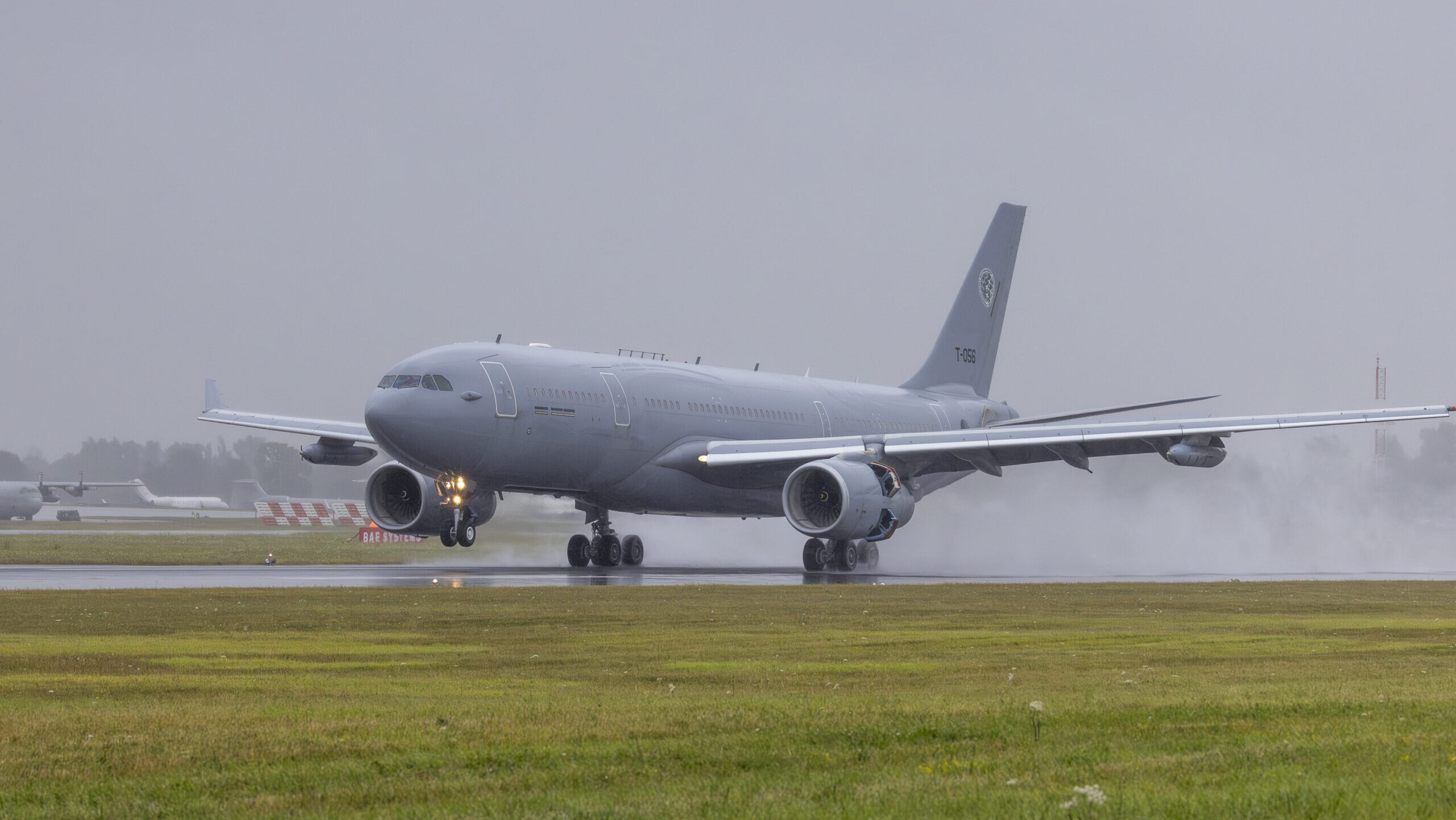
An Airbus A330MRTT lands at RAF Fairford, England during the Royal International Air Tattoo 2023. (Airbus Defence and Space)
FARNBOROUGH 2024 — Airbus has formally launched a second generation A330 Multi-Role Tanker Transport (MRTT) program based around less fuel consumption and greater range.
The new effort, dubbed MRTT+ and working off the A330-800neo commercial airliner, revolves around the integration of the Rolls Royce Trent 7000 engine, improved wingtip design, nacelle and pylon alterations — all taken together to deliver eight percent less fuel consumption for extended range.
The design has been validated through simulations so far, but the company says strong customer interest has already been registered. Should that interest lead to a firm order, Airbus would be in a position to move ahead promptly and without the need for a prototype or demonstrator, according to Jean-Brice-Dumont, head of air power at Airbus Defence and Space.
The A330+ program “is an evolution to meet market demand,” he told reporters today.
Airbus previously signaled that the future MRTT aircraft was on the way, underpinned by a move away from the A330-200 to the A330neo, after revealing last year that bringing the platform to market by the end of the decade was realistic because of de-risking studies validating design choices. At the time, the European manufacturer did not mention which version of the A330neo would be selected.
The neo was designed to be fuel efficient, which serves as one of the “key parameters” for the new + program, said Maria Angeles Marti, head of Tanker and Derivatives at Airbus Defence and Space.
She suggested that the future platform would deliver a significant capability edge over the Boeing KC-46 tanker, equivalent to 33 percent greater range than the competitor platform.
The fuel capacity of the second generation A330 will not change from that of the first generation, which stands at 111 tonnes.
Under wing pods are a key feature of the current A330 tanker as they allow hose and drogue refueling at an expedited fuel offload rate, so receivers are not overly burdened with long refueling intervals.
Previous de-risking studies looked specifically at this area and the engineering issue of incorporating a new wing design with refueling pods.
“Based on the de-risking phase we are confident we have the right behavior to preserve the performance of the hose and drogue operation,” said Angeles Marti.
The + design is independent from the defunct Airbus and Lockheed Martin LMXT air refueller concept, previously put forward for the US Air Force’s KC-135 fleet recapitalization program, but Airbus continues to look on with interest to gauge the service’s next move.
The “US Air Force and US DoD have to come out with a request for proposal or ask the question to start with, so we can actually see how to potentially respond,” he explained. “We have contacts with the government but there is nothing we can officially say,” added Dumont on the possible timing of the solicitation.
After the LMXT breakup with Lockheed Martin, Dumont said that Airbus is currently “not married” to another US industry partner.
More generally, in the wake of Italy cancelling a planned procurement of KC-46 tankers, Airbus could benefit by securing a new A330 order.
“When a customer announces something like that, possibly, we must have contacts and propose a solution,” he said, but stressed additional information is for Italian authorities to share.
